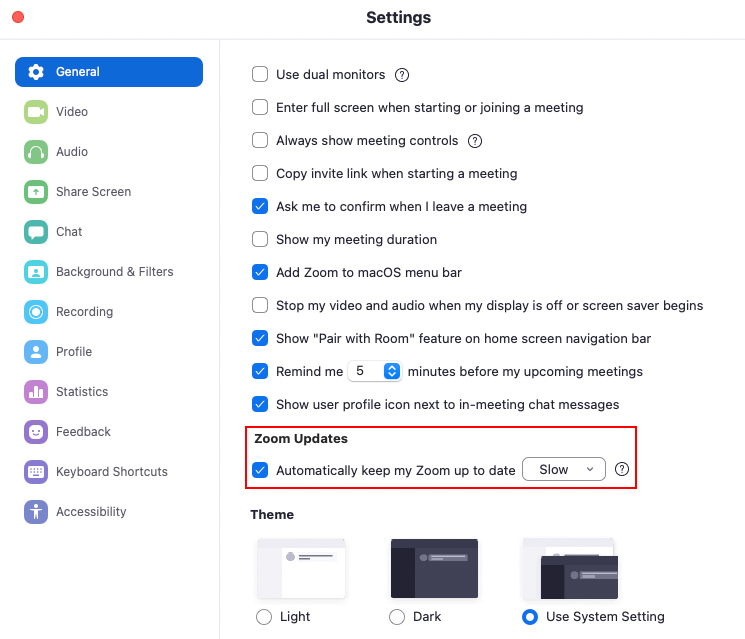KEEP IN TOUCH
Subscribe to our mailing list to get free tips on Data Protection and Cybersecurity updates weekly!







Zoom has announced today the launch of an automatic update feature designed to streamline the update process for desktop clients.
The new feature is currently available only for desktop Zoom clients on Windows and macOS, with the Linux platform not currently supported.
Zoom says that mobile device users can also keep their apps automatically updated through their respective app stores’ built-in automated updaters.
“For most individual users, automatic updates will be enabled by default. When enabled, users will have the opportunity to opt-out of automatic updates for their desktop client after the first install or first update where this feature is present,” said Jeromie Clark, Security & Privacy Technical Product Manager at Zoom.
“Users can also change this preference at any time by checking or unchecking ‘Automatically keep my Zoom up to date’ under Zoom > Settings > General.”
Also Read: Data Protection Act of Singapore: Validity in the Post-pandemic World
Zoom users will be able to switch between Slow and Fast update frequencies, with less frequent updates and a focus on maximizing stability when the Slow option is selected. The latest features and updates will be installed as soon as they’re available when choosing the Fast update channel.
However, regardless of the chosen update channel, critical Zoom client security updates will automatically roll out to all users with automatic updates enabled.
While the platform also provided automatic updates before this to enterprise users, this update “expands the intended audience to include all individual desktop client users who are not members of an enterprise organization.”

Zoom has also added two-factor authentication (2FA) support to all accounts in September 2020, end-to-end encryption (E2EE) in October 2020, and security enhancements to stop zoombombing trolls one month later.
The company’s video conferencing software has become an extremely popular way to keep in touch with friends and host online meetings since the pandemic’s start.
Also Read: National Cybersecurity Awareness Campaign of Singapore: Better Cyber Safe than Sorry
Zoom’s CEO Eric S. Yuan reported a meteoric rise in April 2020 after the platform reached 300 million daily Zoom meeting participants.
The launch of automatic updates for desktop clients couldn’t have come at a better time, seeing that Zoom has patched more than a dozen medium and high severity security flaws in the last two months alone.
In April, Zoom Messenger was also hacked at the Pwn2Own 2021 competition by Computest’s Daan Keuper and Thijs Alkemade. They gained code execution on the targeted device using a zero-click exploit chain combining three Zoom zero-day bugs.